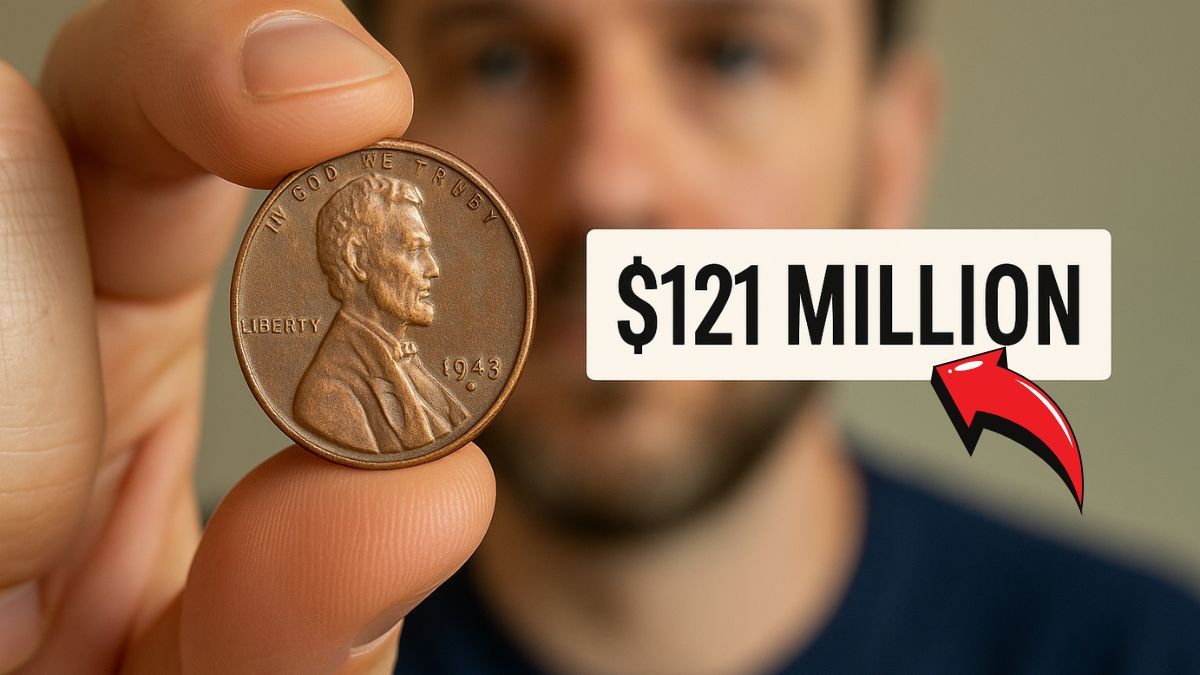In the realm of coin collecting, few tales are as captivating as the legend of the $121 million Lincoln Wheat Penny.
This seemingly ordinary one-cent coin has sparked imaginations worldwide, with claims of its astronomical value and the possibility that it might still be lurking in everyday circulation.
But how much of this is fact, and how much is fiction? Let’s delve deep into the history, rarity, and truth behind this enigmatic coin.
The Origins of the Lincoln Wheat Penny
Introduced in 1909 to commemorate the 100th anniversary of President Abraham Lincoln’s birth, the Lincoln Wheat Penny marked a significant departure from previous U.S. coin designs.
Crafted by Victor David Brenner, it was the first American coin to feature a real person’s likeness. The obverse showcased Lincoln’s profile, while the reverse displayed two wheat stalks, symbolizing prosperity.
Minted until 1958, these pennies were primarily composed of 95% copper and 5% tin and zinc, weighing 3.11 grams. Over the years, several variations and minting errors have made specific editions of this coin highly sought after by collectors.
The $121 Million Claim: Separating Fact from Fiction
Recent online discussions have circulated claims about a Lincoln Wheat Penny valued at $121 million. However, numismatic experts urge caution.
While certain rare pennies have fetched impressive sums at auctions, none have come close to the $121 million mark. For instance:
- A 1943-D Bronze Cent sold for $840,000 in 2021.
- The 1909-S VDB Penny, notable for its limited mintage and designer’s initials, has reached over $300,000.
- A 1955 Double Die Penny, known for its noticeable date and lettering error, has sold for tens of thousands.
These figures, while substantial, are far from the rumored $121 million.
Notable Rare Lincoln Wheat Pennies
To better understand the value of certain Lincoln Wheat Pennies, here’s a table highlighting some of the most coveted variants:
| Year & Variant | Estimated Value | Key Features |
|---|---|---|
| 1909-S VDB | Up to $300,000 | Limited mintage; features designer’s initials |
| 1914-D | Up to $158,625 | Low mintage; Denver mint |
| 1922 “No D” | Up to $92,000 | Missing mint mark error |
| 1943-D Bronze Cent | $840,000 | Minted on copper instead of steel during WWII |
| 1955 Double Die | Up to $114,000 | Noticeable doubling on date and lettering |
How to Identify a Valuable Lincoln Wheat Penny
If you’re curious about the potential value of your Lincoln Wheat Penny, consider the following steps:
- Check the Date and Mint Mark: Look for key years like 1909-S, 1914-D, 1922 (no D), 1943 (copper), and 1955 (double die).
- Examine for Errors: Notable errors include double dies, missing mint marks, and wrong metal compositions.
- Use a Magnet: A 1943 copper penny will not stick to a magnet, unlike its steel counterparts.
- Assess the Condition: Coins in mint or near-mint condition fetch higher prices.
- Seek Professional Appraisal: Consult with a reputable coin dealer or grading service for an accurate evaluation.
The tale of the $121 million Lincoln Wheat Penny serves as a testament to the allure of coin collecting. While the specific claim remains unverified, the world of numismatics is filled with stories of rare coins fetching impressive sums.
Whether you’re a seasoned collector or a curious novice, always keep an eye on your change—you never know when you might stumble upon a hidden treasure.
FAQs
Is there truly a Lincoln Wheat Penny worth $121 million?
No verified Lincoln Wheat Penny has ever sold for $121 million. While some rare variants have fetched significant sums, the $121 million claim lacks substantiated evidence.
Can I still find valuable Lincoln Wheat Pennies in circulation?
While rare, it’s possible. Some valuable pennies have been discovered in pocket change, coin rolls, or old collections. Regularly checking your coins can be worthwhile.
Should I clean my old pennies to increase their value?
No. Cleaning coins can reduce their value. Collectors prefer coins in their original, unaltered state.
